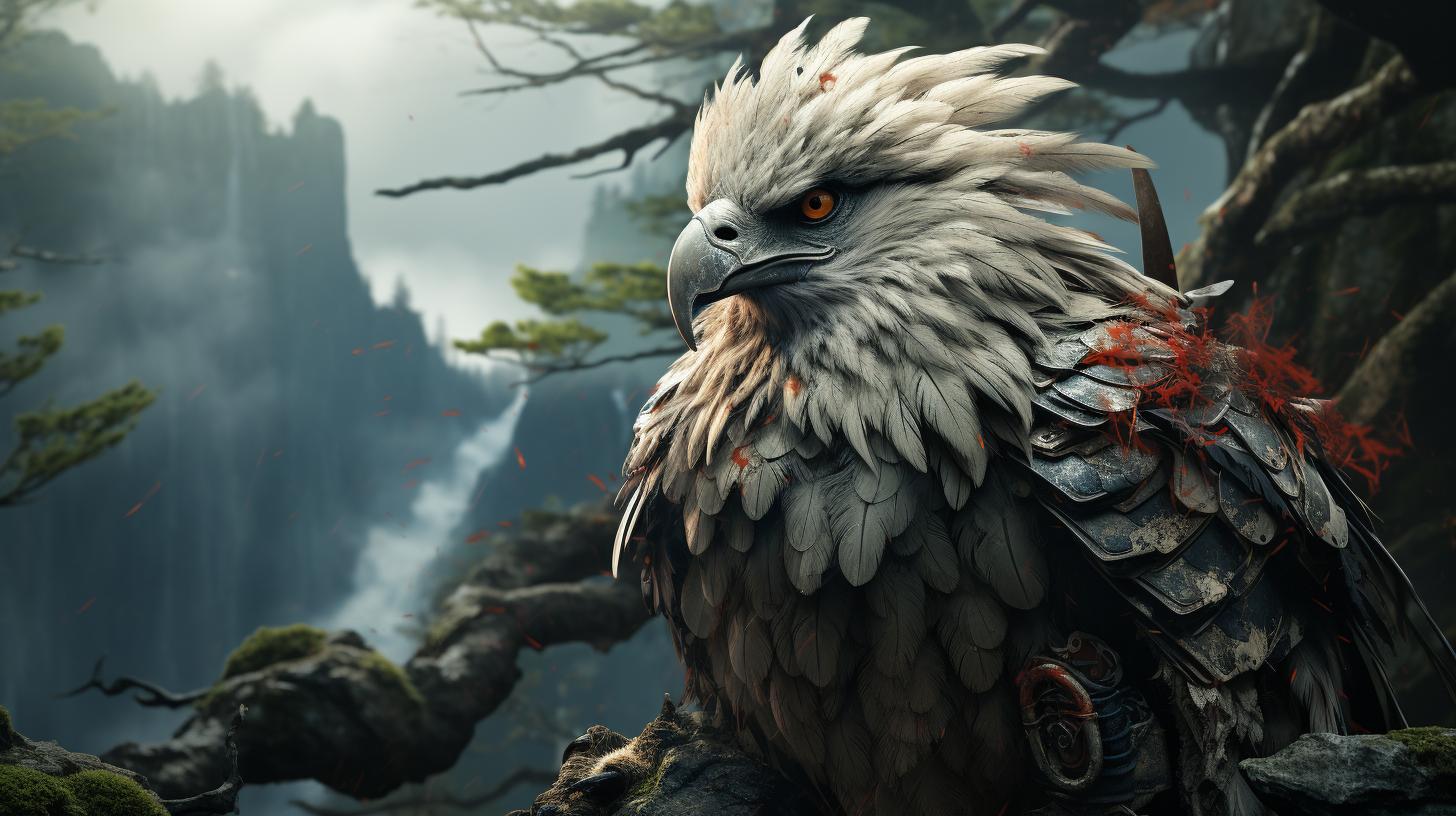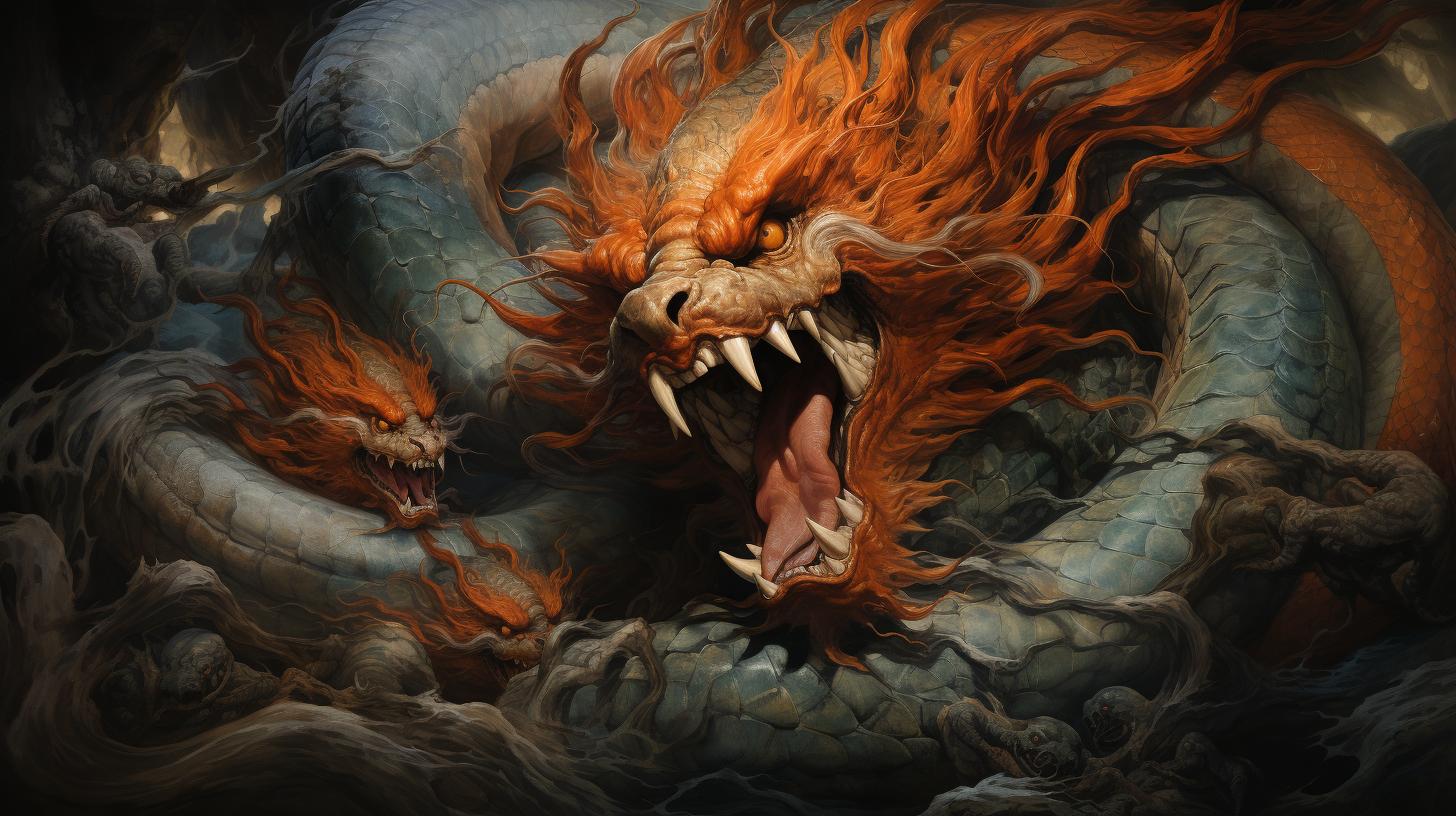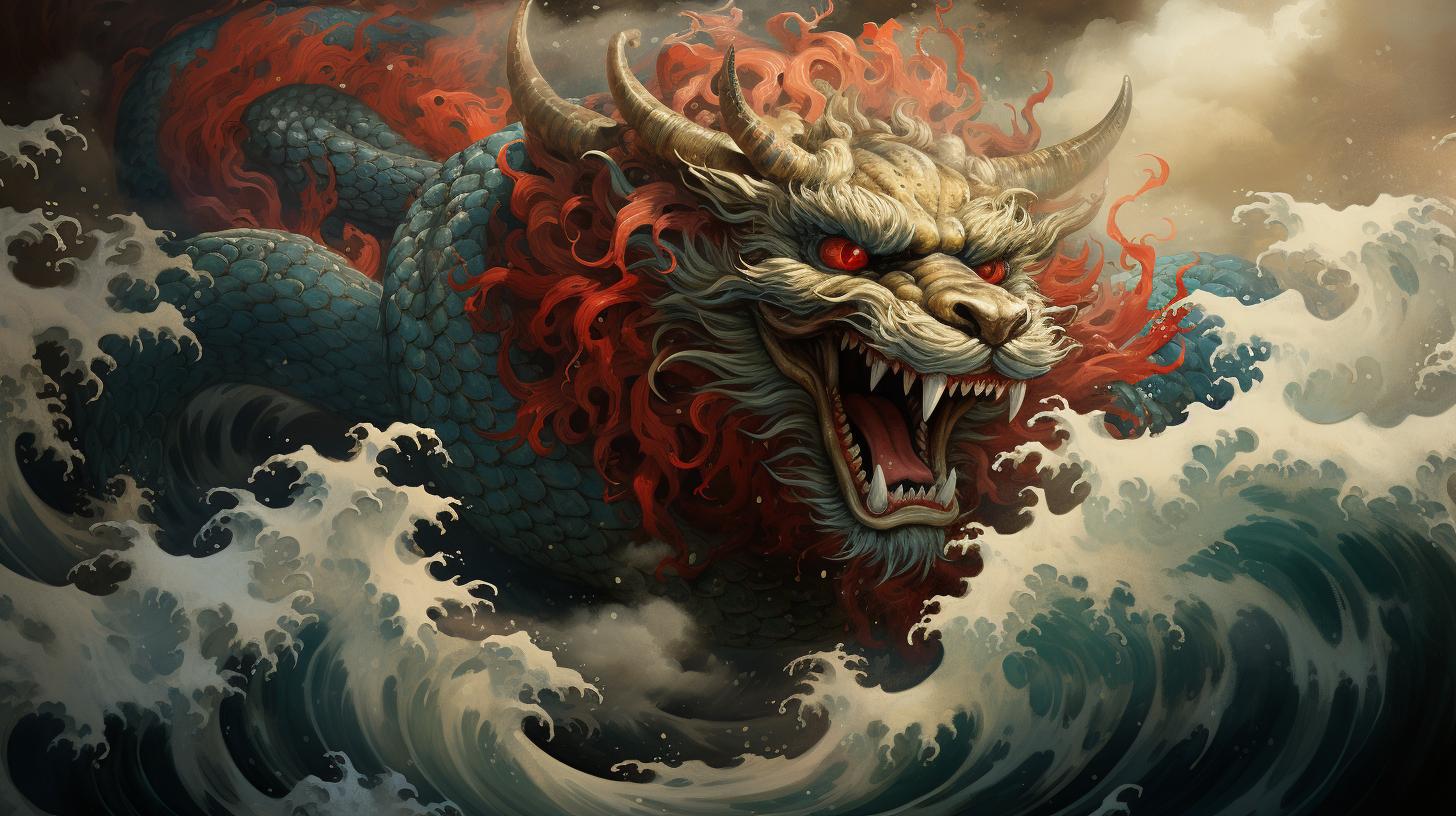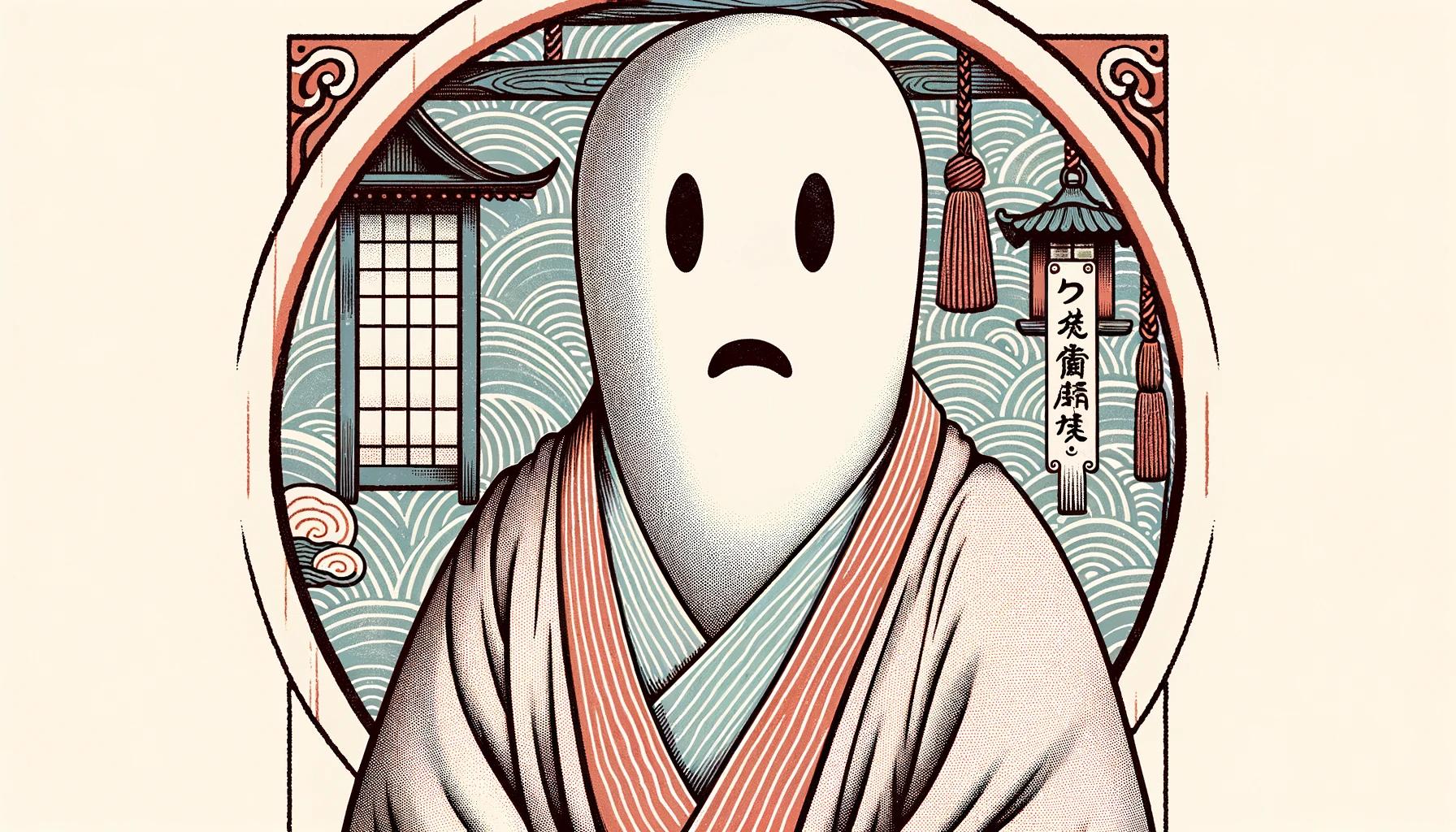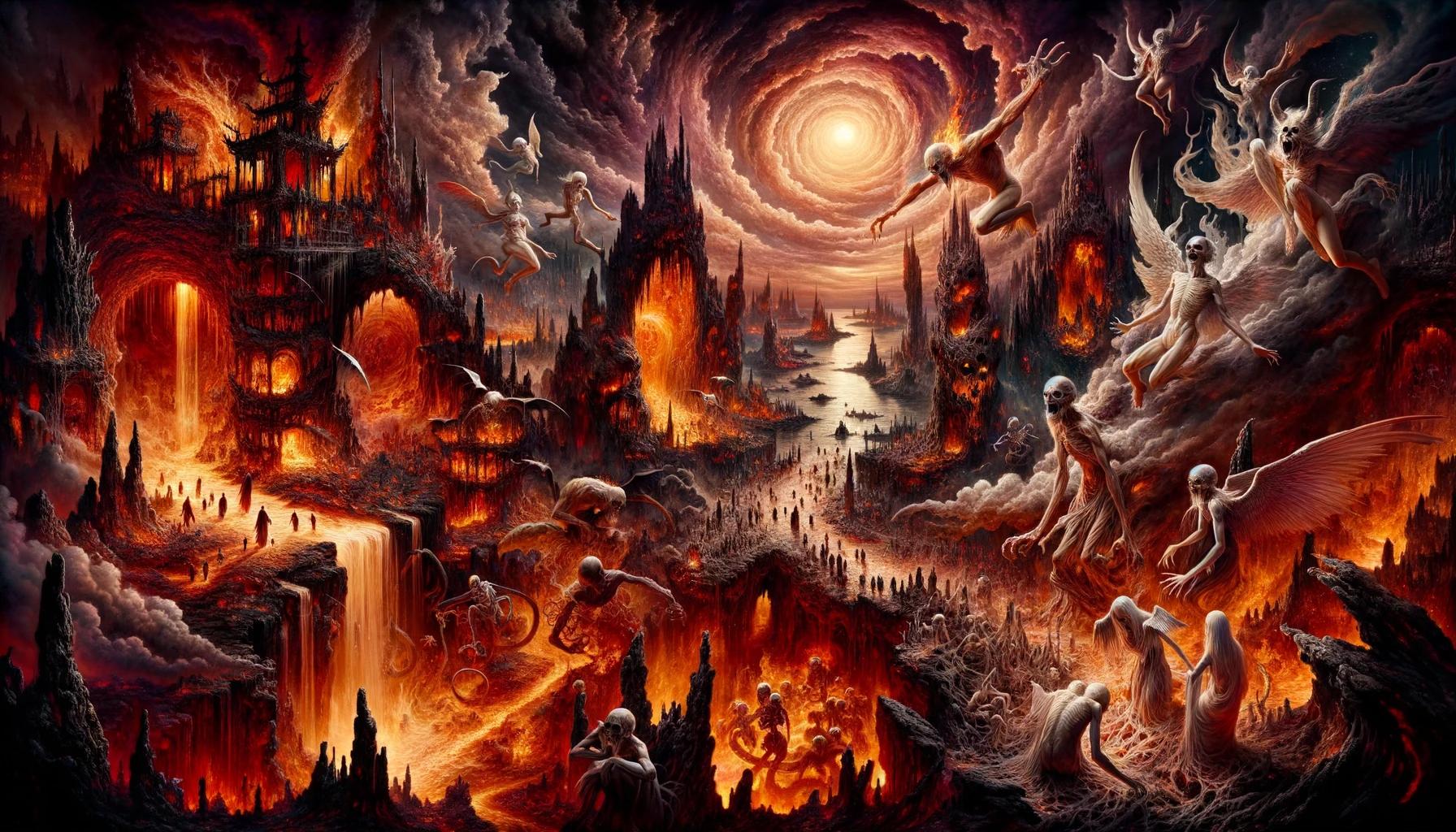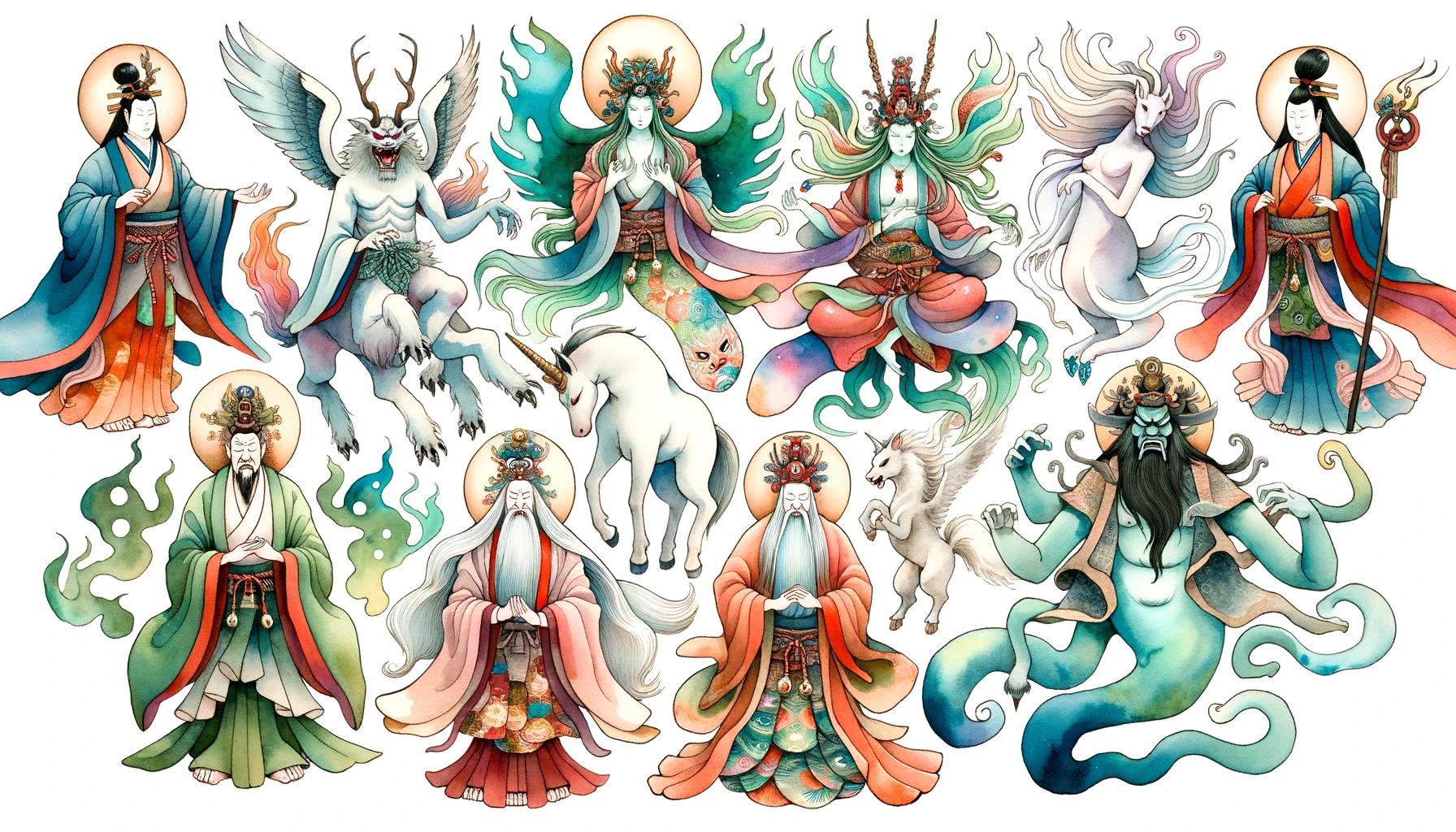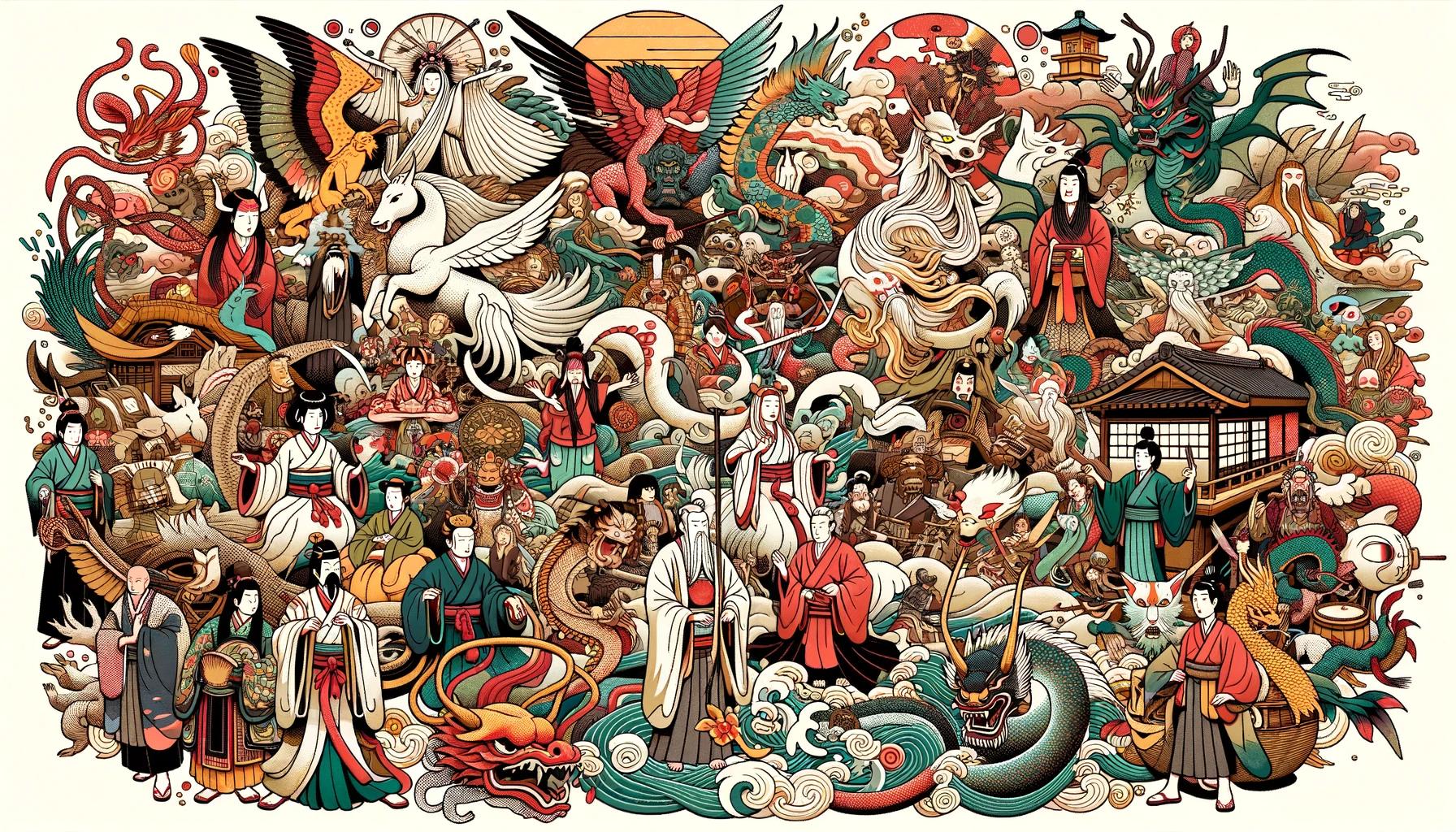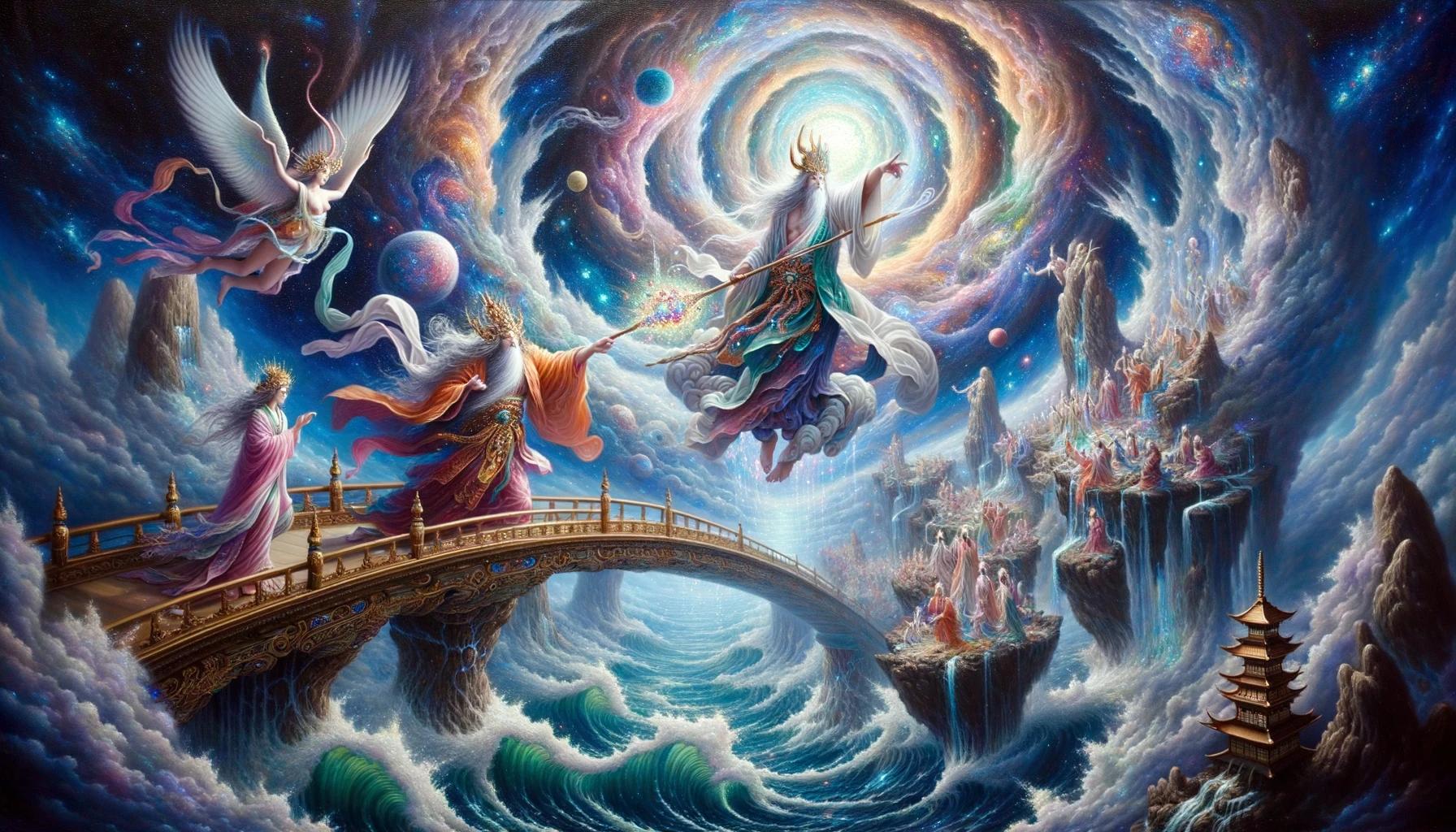Exploring Japanese Yokai Tengu Mythology: A Fascinating Journey into Ancient Japanese Folklore
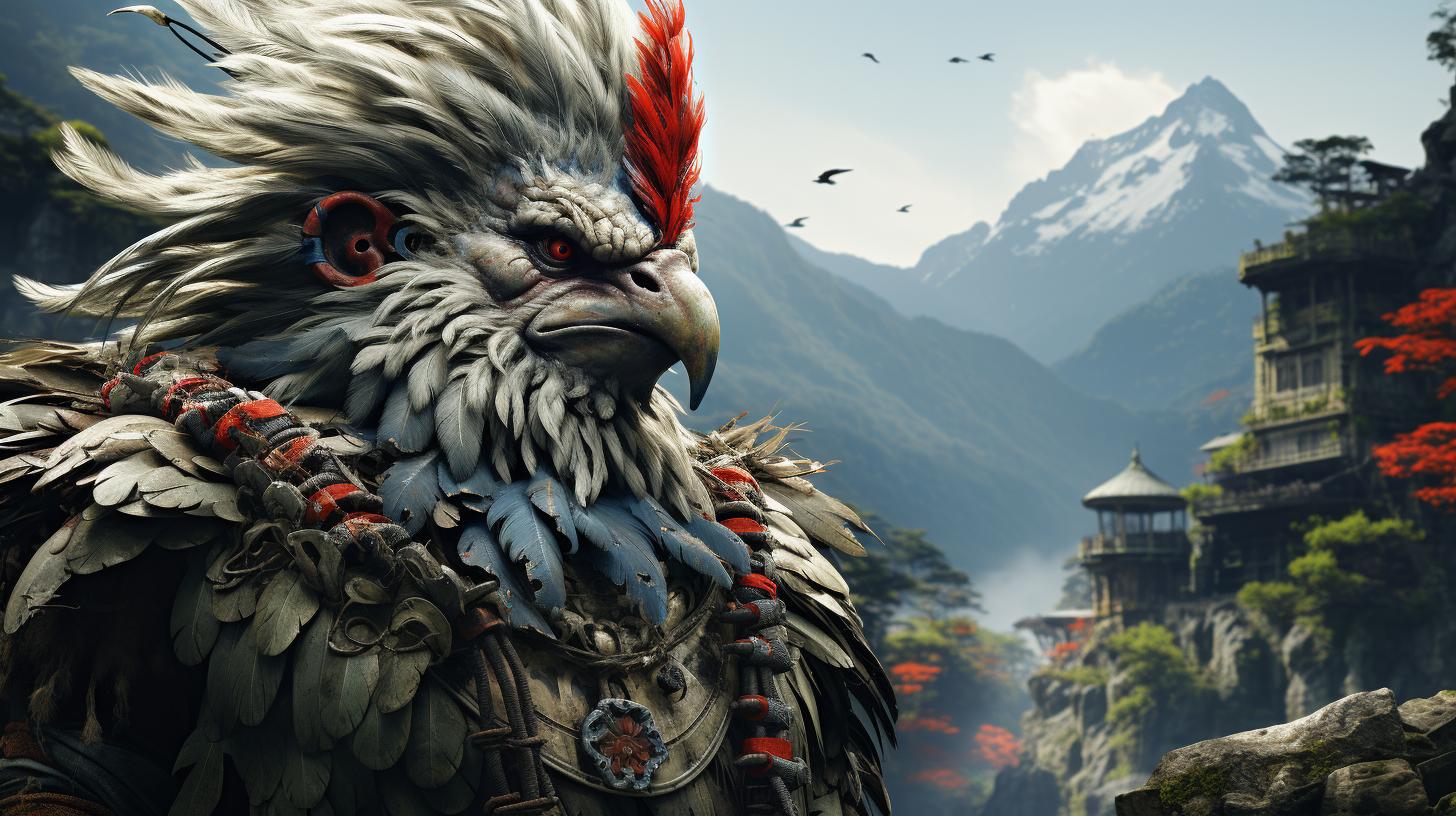
Japanese yokai Tengu mythology is a captivating aspect of Japanese folklore and culture. These supernatural beings, believed to be the reincarnation of proud individuals, hold significant roles in Japanese mythology and art.
With distinct features like long noses and feather fans, Tengu have evolved over time as both revered and feared creatures. Their influence extends to various aspects of Japanese history, including martial arts and performing arts.
Today, Tengu continue to leave their mark on modern media, demonstrating their timeless allure. Additionally, their impact has transcended borders, resonating in Asian folklore and even Western culture.
Yokai in Japanese Mythology
Yokai are supernatural creatures deeply rooted in Japanese mythology and folklore.
They have been a part of Japanese culture for centuries, captivating the imagination and inspiring various forms of artistic expression. This section explores the origins, history, depiction, and role of yokai in Japanese mythological traditions.
Origins and History of Yokai
Yokai trace their origins back to ancient Japan, where they were believed to be spirits or entities that inhabited the natural world. The concept of yokai gradually developed and took shape alongside the growth of Japanese civilization.
Their history can be traced through literary works, such as “The Tale of Genji” and “The Pillow Book,” where yokai were often depicted in supernatural encounters and as allegorical representations of human emotions and desires.
Depiction of Yokai in Japanese Folklore and Culture
In Japanese folklore and culture, yokai are depicted in various forms and appearances. They can range from mischievous and playful spirits to terrifying and malevolent creatures. Yokai are often associated with specific locations, such as mountains, forests, rivers, and even household objects.
They have been the subject of numerous folktales, ghost stories, and artistic representations, showcasing their unique characteristics and capturing the imagination of generations.
Role of Yokai in Japanese Mythology
Yokai play significant roles in Japanese mythology, embodying both the natural and spiritual realms. They are believed to possess supernatural powers and abilities, interacting with humans and other mythical beings.
Yokai are often associated with aspects of nature, such as natural disasters, seasons, and the balance between the human and spirit worlds. They serve as guardians, tricksters, or warnings, representing the complex relationship between humans and the unseen forces inhabiting the world.
In conclusion, yokai hold a prominent place in Japanese mythology, influencing cultural practices, art forms, and the collective imagination. Their diverse origins, depictions, and roles contribute to the rich tapestry of storytelling and belief systems in Japan.
Introduction to Tengu
The mythical creatures known as Tengu hold a significant place in Japanese folklore and culture. This section delves into the legends, characteristics, and their influence on Japanese art and popular culture.
Legend and Mythology of Tengu
Tengu mythology traces back to ancient times, with stories portraying them as powerful and mischievous beings. They are believed to be the reincarnation of proud individuals who, in life, possessed exceptional skills and martial prowess.
Tengu are often associated with their connection to renowned heroes and samurais, such as Minamoto Yoshitsune, to whom they imparted their martial arts expertise.
Characteristics and Traits of Tengu
Tengu are commonly depicted as supernatural creatures with both avian and human characteristics. They are recognized for their distinctive long and red noses, symbolizing their wisdom and perception. Associated with their appearance, Tengu are known for their skill in using feather fans, which hold magical abilities, including the power to create great winds.
Additionally, they are often depicted wearing geta sandals with a single tooth.
Tengu in Japanese Art and Popular Culture
The allure of Tengu extends into various realms of Japanese art and popular culture. They have been depicted in traditional paintings, sculptures, theater, and literature. Their presence is widespread in contemporary media, including anime, manga, and video games, where they continue to captivate audiences with their complex and mysterious nature.
Tengu’s rich symbolism and iconic attributes make them a favored subject among artists and storytellers.
Tengu: Supernatural Creatures with a Long History
Tengu, the enigmatic beings of Japanese folklore, boast a rich and intricate history that spans centuries. Within this realm of myth and legend, Tengu have had an enduring presence, captivating the imaginations of many.
Let’s delve into the ancient roots and evolution of Tengu, explore their various types and forms, and uncover their significant role in Japanese folklore and legends.
Ancient Roots and Evolution of Tengu
Tengu’s origins can be traced back to ancient Japan, where they first emerged as bird-like creatures.
Initially depicted as avian spirits or birds of prey, Tengu gradually evolved over time, adopting human and monkey-like characteristics. This metamorphosis reflects the cultural and religious changes that took place, showcasing the dynamic nature of Tengu’s development within Japanese society.
Various Types and Forms of Tengu
Tengu exist in diverse forms, each possessing distinct attributes and roles. The Karasu-Tengu, or Raven Tengu, resembles a giant crow with human features and often serves as messengers or servants of deities.
On the other hand, the Konoha-Tengu, known as Leaf Tengu, appears as woodland spirits and holds close associations with mountains and forests. These variations in Tengu forms add depth to their portrayal and contribute to their multifaceted nature.
Tengu’s Role in Japanese Folklore and Legends
Throughout Japanese folklore and legends, Tengu have been prominent figures, weaving themselves into captivating tales. Often depicted as both tricksters and wise sages, Tengu play diverse roles in these narratives. They are known for imparting martial arts skills, acting as guardians of sacred places, and occasionally mischievously interfering in human affairs.
Their presence in folklore highlights their significance as spiritual entities with the power to influence the human realm.
- Tengu as Masters of Martial Arts: Tengu are renowned for their expertise in martial arts and have been depicted as instructors to iconic figures such as Minamoto Yoshitsune, a celebrated warrior.
They embody not only physical prowess but also the wisdom and discipline associated with martial training.
- Tengu as Protectors of Sacred Spaces: Seen as guardians of mountains and forests, Tengu are believed to ensure the preservation of these natural landscapes.
They are revered as protectors of spiritual sites and are associated with Shinto and Buddhist practices centered around nature worship.
- Tengu’s Mischievous Nature: While often seen as benevolent beings, Tengu possess a mischievous streak.
They are known to enjoy playing pranks on unsuspecting humans, testing their virtues and challenging their egos. Yet, these encounters also serve as opportunities for personal growth and enlightenment.
The profound role Tengu play in Japanese folklore and legends is a testament to the enduring allure of their enigmatic presence.
As we continue to explore the world of Tengu, we shall uncover more fascinating dimensions to their mystical existence.
Tengu’s Appearance and Symbolism
The Distinctive Nose of Tengu
One of the most iconic features of Tengu is their long, prominent nose. The elongated nose is often depicted as red and stands out prominently on their faces. This distinctive attribute symbolizes their supernatural nature and intelligence.
It is believed to represent their ability to discern truth from falsehood, as well as their keen perception and wisdom. The size and length of the nose can vary in artistic representations, but it always remains a defining characteristic of the Tengu.
Tengu and their Feather Fans
Tengu are often portrayed holding feather fans known as hauchiwa. These magical fans are not only decorative, but they also play a significant role in Tengu mythology. According to legends, the hauchiwa possesses the power to create strong gusts of wind, enabling Tengu to take flight and move with extraordinary speed.
This association with wind and flight emphasizes their connection to the spiritual realm and their ability to traverse between different worlds. The feathered fans also represent Tengu’s authority and status as supernatural beings.
Symbolic Representations and Meanings of Tengu
Tengu hold various symbolic meanings in Japanese mythology and culture. They are often seen as guardians of the mountains and forests, representing a balance between the natural world and the supernatural realm.
Tengu are iconic symbols of power, intelligence, and spiritual enlightenment. Their presence is believed to bring protection and guidance to those who acknowledge and respect their existence. Additionally, Tengu’s association with martial arts and warrior prowess symbolizes discipline, skill, and determination.
Their transformation from mischievous tricksters to revered figures reflects the belief in personal growth and overcoming challenges.
Tengu’s Influence in Japanese History and Culture
The Tengu have had a significant impact on Japanese history and culture, leaving their mark in various aspects of Japanese society. Their influence can be observed in Japanese mythology and Shintoism, martial arts and samurai culture, as well as traditional performing arts.
Tengu’s Presence in Japanese Mythology and Shintoism
Tengu hold a prominent place in Japanese mythology and Shintoism. They are often considered supernatural beings associated with mountains and forests. In ancient beliefs, Tengu were seen as dangerous and disruptive spirits, capable of causing chaos and calamity.
However, over time, their image shifted, and they became associated with being protectors of the mountains and guardians of sacred sites.
Tengu and their Role in Martial Arts and Samurai Culture
The Tengu’s expertise in martial arts has made them legendary figures in Japan’s samurai culture.
They are renowned for their martial prowess and their involvement in training warriors. Legends even attribute the teaching of martial arts to Tengu, specifically to the hero Minamoto Yoshitsune. Their influence on samurai culture and combat techniques cannot be overstated, as they are considered masters of swordsmanship and strategy.
Tengu’s Impact on Traditional Performing Arts
Tengu have also left their mark on traditional performing arts in Japan. Their representation and stories are integral to various art forms, including Noh theater and Kabuki. Legends, myths, and folklore surrounding Tengu have inspired numerous theatrical productions, enriching the cultural heritage of Japan.
Their unique appearance, distinctive attributes, and mythical reputation continue to captivate audiences and influence the aesthetics of Japanese performing arts.
As we explore the influence of Tengu in Japanese history and culture, it becomes evident that these mythical beings occupy a significant position in various aspects of Japanese society.
From their presence in mythology and religious practices to their impact on martial arts and performing arts, Tengu continue to be revered and celebrated as influential figures in Japanese folklore and cultural traditions.
Tengu in Modern Media and Entertainment
Modern media and entertainment have embraced the captivating world of Japanese yokai Tengu, showcasing their rich mythology and intriguing characteristics. From literature and folktales to anime, manga, and video games, Tengu’s presence continues to captivate audiences worldwide.
Tengu in Japanese Literature and Folktales
Tengu have been prominent figures in Japanese literature and folktales for centuries. They often appear as mischievous yet wise beings, challenging humans with their cunning tricks and imparting valuable lessons. Stories like “Tengu no Dairi” and “Tengu’s Feathered Robe” explore the fascinating encounters between humans and these supernatural creatures.
Tengu in Anime, Manga, and Video Games
The allure of Tengu has not been lost in the world of anime, manga, and video games. Numerous popular series and games incorporate Tengu as compelling characters, each with their own unique traits and abilities.
Their inclusion adds depth to storylines and provides fans with a glimpse into the mystical world of Japanese yokai.
Well-known anime series like “Naruto” feature Tengu-inspired characters such as Sasuke Uchiha, who possesses Tengu-like traits and powers.
In video games, Tengu make appearances in titles like “Okami” and “Touhou Project,” allowing players to engage with their mythical abilities and immerse themselves in Japanese folklore.
Tengu’s Online Presence and Fan Feed
The influence of Tengu extends beyond traditional media, as they have found a significant presence in the online world.
Communities of fans dedicated to Japanese yokai mythology frequently discuss Tengu and share artwork, stories, and interpretations of these enigmatic creatures. Online platforms and fan sites provide a gateway for enthusiasts to connect, collaborate, and delve deeper into Tengu legends and lore.
The fascination with Tengu in modern media and their continuous portrayal in literature, anime, manga, video games, and online communities exemplify their enduring appeal. These mystical beings from Japanese folklore continue to captivate audiences, bridging the gap between ancient mythology and contemporary entertainment.
Mizuki Shigeru and Tengu’s Legacy
Mizuki Shigeru, a renowned Japanese manga artist and historian, has made significant contributions to the legacy of Tengu mythology. Through his works, he has brought these mystical creatures to the forefront of popular culture and further enriched their significance in Japanese folklore.
Mizuki Shigeru’s Contribution to Tengu Mythology
Mizuki Shigeru dedicated a considerable portion of his artistic career to exploring and depicting Tengu in his manga and illustrations. His meticulous research and attention to detail brought forth a comprehensive understanding of Tengu’s folklore and evolved their narratives in contemporary storytelling.
In his manga series “GeGeGe no Kitaro,” Mizuki Shigeru introduced Tengu as prominent characters, showcasing their unique personalities, abilities, and their connection to the supernatural realm. Through his vivid storytelling and captivating visuals, he introduced Tengu to a wider audience, spreading awareness about their significance in Japanese mythology.
Tengu in Mizuki Shigeru’s Works and Legacy
Mizuki Shigeru’s portrayal of Tengu in his works went beyond entertainment; it contributed to the preservation and appreciation of Japanese folklore. His illustrations magnificently captured the essence of Tengu, ensuring their visual representation remained true to their historical depictions while adding his own artistic flair.
Not only did Mizuki Shigeru create engaging narratives involving Tengu, but he also shared valuable insights into their origins, mythology, and cultural significance. His works served as educational resources, introducing readers to the depth and richness of Tengu’s mythology and their impact on Japanese culture.
Mizuki Shigeru’s legacy extends beyond his artistic contributions. He influenced subsequent generations of manga artists, writers, and illustrators who have continued to explore and incorporate Tengu into their own works. His dedication to preserving and promoting Tengu’s legacy has made a lasting impact on Japanese popular culture.
- Mizuki Shigeru brought Tengu to the forefront of popular culture through his manga and illustrations.
- His meticulous research and attention to detail enriched the understanding of Tengu’s folklore.
- “GeGeGe no Kitaro” introduced Tengu as prominent characters and expanded their narratives.
- Mizuki Shigeru’s works served as educational resources, sharing valuable insights into Tengu’s origins and cultural significance.
- His legacy influenced subsequent generations of artists, ensuring the perpetuation of Tengu’s mythology in Japanese popular culture.
Tengu: Mystical Beings of Japanese Folklore
Tengu are captivating and enigmatic creatures deeply rooted in Japanese folklore.
They embody the duality of tricksters and guides, playing essential roles in Japanese mythos. Exploring their cultural significance and beliefs surrounding Tengu reveals a rich tapestry of legends and tales passed down through generations.
Tengu and their Role as Tricksters and Guides
Tengu are known for their mischievous nature and their ability to both deceive and guide humans. As tricksters, they may play pranks or lead travelers astray in the mountains. However, they can also act as spiritual guides, offering wisdom and guidance to those who show sincerity and respect.
Cultural Significance and Beliefs Surrounding Tengu
Tengu hold immense cultural significance in Japan, representing a balance between good and evil, chaos and order. They are often associated with the Shinto religion, embodying the power of kami or divine spirits.
In Japanese folklore, Tengu are believed to possess supernatural abilities, such as shape-shifting and telepathy.
Beliefs surrounding Tengu vary across different regions of Japan, but they are commonly seen as protectors of the mountains and forests.
They are revered for their wisdom and expertise in martial arts, inspiring awe and respect among practitioners.
Popular Folk Tales and Stories featuring Tengu
- The Legend of Minamoto Yoshitsune: Tengu are prominently featured in the legend of Minamoto Yoshitsune, a heroic figure who received martial arts training from the Tengu. Their guidance and teachings played a pivotal role in Yoshitsune’s rise to power.
- The Tale of the Bamboo Cutter: In this famous folk tale, a Tengu is depicted as a wise old man who assists the protagonist in completing difficult tasks.
This portrayal showcases the helpful and benevolent side of Tengu.
- The Battle of Shika-no-hara: This legendary battle tells the story of multiple Tengu clans engaging in fierce combat with each other, displaying their martial prowess and highlighting their role as formidable warriors.
The intriguing stories and legends featuring Tengu continue to captivate audiences and provide a glimpse into the mystique of Japanese folklore.
Tengu Outside of Japan
While Tengu originated from Japanese folklore, their influence and presence can be found beyond the borders of Japan. These mystical beings have made their way into various Asian folklores and mythologies, captivating the imagination of different cultures.
Tengu’s Influence and Presence in Asian Folklore and Mythology
Across Asia, Tengu-like creatures can be found in different forms and names. In Chinese folklore, similar bird-like beings known as tiāngǒu share similarities with Tengu. These creatures are often depicted as fearsome guardians or celestial hounds.
In Korean mythology, a similar creature called Dokkaebi bears resemblance to Tengu. Dokkaebi are mischievous goblins known for their pranks and supernatural powers. While they have their own unique characteristics, some similarities can be observed, such as their trickster nature.
Tengu’s presence extends to other Southeast Asian countries as well. In Vietnam, there are legends of bird-like creatures called Nghê, which have both bird and human characteristics, much like Tengu. These Nghê are associated with mountains and seen as protectors of nature.
Tengu’s Cultural Exchange and Perception in the West
With the globalization of media and cultural exchange, Tengu have piqued the interest of Western audiences. They have made their way into Western literature, art, and popular culture, further increasing their recognition and intrigue.
In the West, Tengu are often depicted in works of fantasy, appearing in novels, comics, and video games. Their distinct appearance, martial arts prowess, and supernatural abilities make them fascinating and formidable creatures in Western imaginations.
Tengu’s symbolism and mystique have also inspired Western artists and designers. Their influence can be seen in various forms of art, including sculptures, paintings, and tattoos.
Tengu’s Relevance in Modern World and Global Culture
Even in the modern world, Tengu continue to captivate and inspire people around the globe.
Their unique mixture of human and avian traits, along with their rich mythology, have made them iconic figures in pop culture.
Tengu’s presence can be felt in popular media, including anime, manga, and video games, where they often appear as powerful and enigmatic characters.
They have become beloved by fans worldwide, contributing to the global reach of Japanese pop culture.
Moreover, Tengu’s cultural significance extends beyond entertainment. They serve as reminders of Japan’s rich folklore and mythology, showcasing the country’s unique spiritual beliefs and traditions.
.

